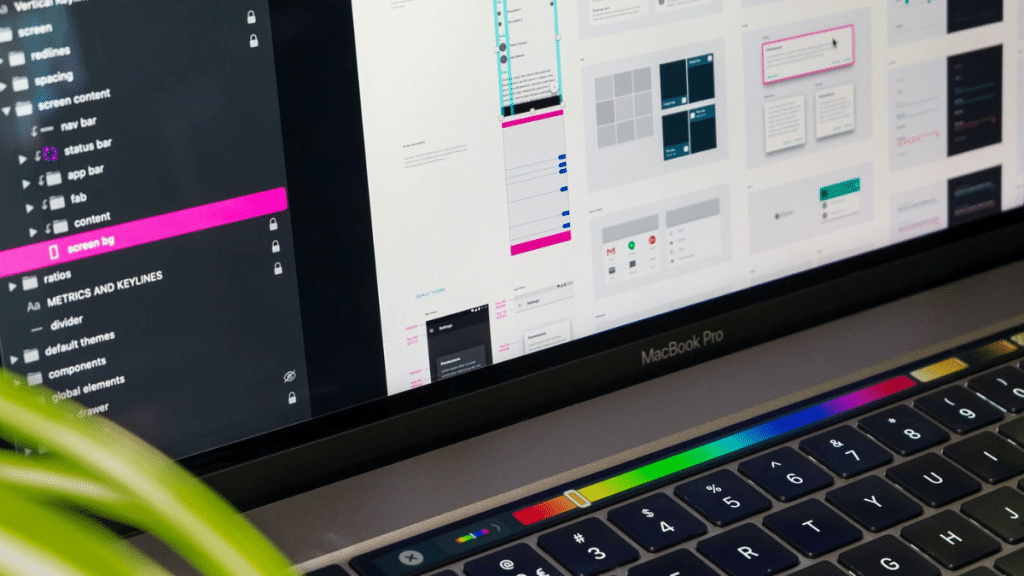With the advent of the digital age, websites and apps are no longer mere code and images; they are experiences. Every pixel, every touch point, and every line of code is important in creating the means by which people interact with digital products. UI (User Interface), UX (User Experience), and software development come together in harmony to create effortless, functioning, and visually magnificent solutions for success. Let us explore the synergy of the above elements and how they form web design and web development’s future.
The Power Trio: UI, UX & Code Collaborating
A successful application or website is not just about how it looks (UI) but how it feels (UX) and how it works (Code). These three components must work together to provide digital experiences that are both engaging and efficient. A software design and development company makes sure that these three work in harmony, creating high-quality digital products.
UI (User Interface): The graphical layer that users perceive, such as buttons, icons, fonts, and color palettes.
UX (User Experience): The end-to-end experience a user gets when they explore a website or app, providing usability, accessibility, and performance.
Code (Software Development): The foundation that realizes the UI and UX using programming languages, frameworks, and backend implementations.
When all these components come together in harmony, they design digital solutions that not only bring in users but also retain them and make them happy.
UI: Where Beauty Meets Function
The first impression is all that matters. UI design needs to produce attractive and intuitive interfaces that capture users’ attention. A good UI guarantees that users are able to navigate with ease without any ambiguity.
Major Elements of a Great UI:
Consistency: Uniformity in the design of all pages improves familiarity and usability.
Simplicity: Simple layouts with clear icons and buttons minimize cognitive load.
Responsive Design: Web pages and applications need to work smoothly across multiple screen sizes and devices.
A gorgeous interface is only worthwhile if it facilitates the user experience, with easy and smooth navigation.
UX: Building Memorable User Journeys
A gorgeous location is useless if it doesn’t offer a great experience. UX seeks to make it easy for customers to interact, so they can discover what they are looking for without effort. Mobile responsive web design plays a crucial role in ensuring customers have an unbroken experience on any platform.
How UX enhances engagement:
User-Centered Design: Creating experiences from an understanding of the user behavior, user needs, and user pain points.
Intuitive Navigation: An organized structure that guides users seamlessly to the content without frustration.
Speed & Performance: Optimizing load times so users won’t abandon a site due to slow performance.
A solid UX strategy keeps visitors around longer, engage more, and eventually become customers.
Code: The Power Behind the Experience
While UI and UX emphasize design and interaction, code is the force that powers it all. Developers close the gap between design ideas and actual use.
The Code’s Role in UI & UX:
Front-End Development: Brought to life by HTML, CSS, and JavaScript.
Back-End Development: Smooth data handling, security, and app performance.
Scalability & Flexibility: Clean, modular code that can be improved upon and feature-enhanced in the future.
A good development team makes sure the experience designed is functional, fast, and scalable.
The Perfect Synergy: When UI, UX & Code Align
The most effective digital products occur when designers and developers collaborate with each other instead of in isolation. Collaboration facilitates innovation and ensures technologically viable design decisions and user-centric development efforts.
Best Practices for Seamless Integration:
Early Collaboration: Designers and developers must collaborate from the planning phase to prevent misalignment.
Prototyping & Testing: Interactive prototypes enable checking of designs prior to development.
Continuous Feedback: Ongoing testing and user feedback enable iterative improvement.
When code, UI, and UX coexist in perfect harmony, the final result is a strong digital product that not only looks amazing but also works incredibly well.
The Future of UI, UX & Software Development
As technology advances, so does the marriage between development and design. Technologies such as AI-driven UX, voice interfaces, and immersive experiences (AR/VR) are pushing the boundaries of what’s possible.
AI & Automation: Machine learning facilitates dynamic user experience personalization.
Dark Mode & Adaptive UI: Empowering users with control over their visual experience.
Performance-First Development: Optimizing speed and smooth micro-interactions for better engagement.
Companies that adopt the harmony between UI, UX, and development will be at the forefront of building future-proof digital experiences.
Final Thoughts: Bringing Design & Development Together for Success
A site or app is no stronger than the bond between design and dev teams. UI, UX, and code aren’t independent but harmonious forces that define the user experience. They become interesting, effective, and future-proof digital solutions when in perfect synergy with each other. Whether it’s a plain site or a complex app, all three pillars must be in harmony to be a long-term winner in today’s ever-changing digital world.
